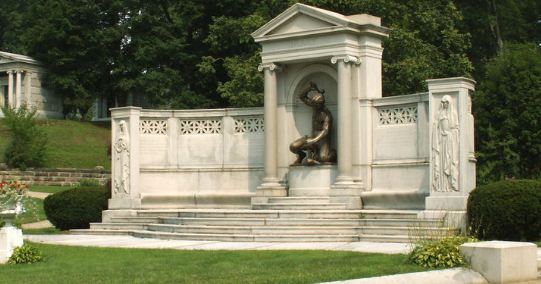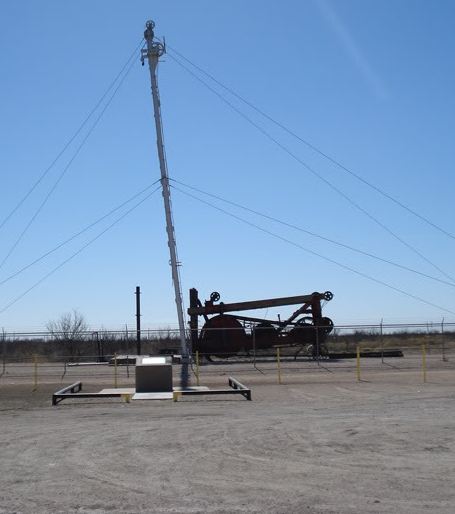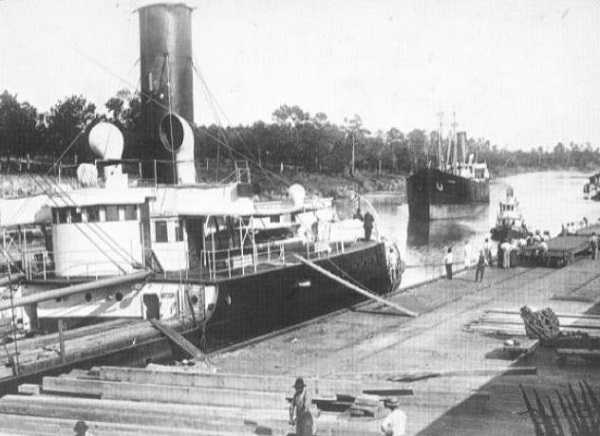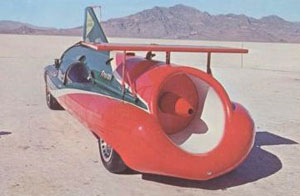November 6, 1860 – First Multi-Still Oil Refinery started in Pennsylvania –
As the Civil War neared, construction began on America’s first multiple-still oil refinery. William Barnsdall, who completed a oil well soon after the first U.S. oil well of August 1859, spent $15,000 to build six stills for refining kerosene one mile south of Titusville, Pennsylvania.
Barnsdall and partners W.H. Abbott and James Parker purchased equipment in Pittsburgh and shipped it up the Allegheny River to Oil City, and then to Oil Creek oilfields. With the refinery’s construction on the creek’s north bank finished in January 1861, the facility produced two grades of kerosene for lamps — white and the less expensive yellow. Each barrel of oil yielded about 20 gallons of kerosene.
November 6, 1991 – Ceremony marks end of Kuwaiti oilfield fires
Sheik Jabir Ahmed Sabah, emir of Kuwait, used a remotely controlled valve to extinguish a well fire in the Burgan oilfield (relit earlier for the ceremony). The event symbolized conclusion of a “billion-dollar firefighting effort that capped the fires in just eight months — confounding initial predictions that Kuwait’s oil fields would burn for years,” according to the Washington Post. “With a flick of a switch that reduced a geyser of flame to a plume of smoke, Kuwait’s ruler today capped the last of about 650 oil-well fires that had been set by retreating troops of Iraqi leader Saddam Hussein.”
November 7, 1965 – Kerosene Jet Fuel powers Speed Record
Using high-octane jet fuel, Ohio drag racer Art Arfons set the world land speed record at 576.553 miles per hour at Utah’s Bonneville Salt Flats. His home-made Green Monster was powered by JP-4 fuel (a 50-50 kerosene-gasoline blend) in an afterburner-equipped F-104 Starfighter jet engine.
Arfons set the world record three times in the 1960s in what became known as “The Bonneville Jet Wars” as Californian Craig Breedlove’s jet-engine powered Spirit of America exceeded 600 mph on November 15, 1965.
A rocket car powered by liquefied natural gas (LNG) set the world speed record at more than 630 mph in 1970 (see The Blue Flame –– Natural Gas Rocket Car).
November 8, 1880 – Death of Father of U.S. Petroleum Industry
Edwin Laurentine Drake, the former railroad conductor who drilled the first U.S. oil well, died in Bethlehem, Pennsylvania, at the age of 61.

A monument to Edwin Drake with a bronze statue, “The Driller,” was dedicated on October 4, 1901, in Titusville, Pennsylvania. It was refurbished after the 2009 sesquicentennial of his historic well. Photo by Bruce Wells.
Drake’s 1859 oil discovery had brought prosperity to many, but he lost all of his money in speculative ventures, becoming so destitute the Pennsylvania legislature voted him a $1,500 pension in 1873.
A 1901 monument dedicated in Titusville’s Woodlawn Cemetery was the overdue recognition of the man who launched the U.S. oil industry (see Edwin Drake and his Oil Well).
November 8, 1928 – Oil Discovery at Hobbs, New Mexico
Six years after the first New Mexico oil wells, a giant oilfield was revealed in a remote region of Lea County at the southeast corner of the state.
Midwest Refining Company (the future Amoco) discovered what would become the Permian Basin’s Hobbs oilfield while searching for a northern trend of the Scarborough field, which had launched a 1927 drilling boom in nearby Winkler County, Texas.

The 1928 Hobbs oilfield discovery well was commemorated with a cable-tool rig erected in 1952 by the American Petroleum Institute.
After finding oil at a depth of 4,220 feet, “the Midwest’s State No. 1, discovery well of the future Hobbs oil pool, was completed, producing 700 barrels of oil per day on state land,” noted Gil Hinshaw in his 1976 book, Lea County’s Last Frontier.
By January 1930, a well drilled by Humble Oil Company (the future Exxon) three miles northwest of Hobbs would produce 9,500 barrels of oil a day.
November 10, 1854 – Oil Seeps inspire First American Oil Well
America’s petroleum industry began when a lumber company sold 105 acres along a Pennsylvania creek known for having oil seeps. George Bissell of New Hampshire, interested in what was then known as “rock oil,” bought the land from Brewer, Watson & Company.
Bissell suspected the oil could be distilled to make inexpensive kerosene for lamps. He asked a Yale professor to conduct experiments.

George Bissell’s interest in Pennsylvania oil seeps led to the first U.S. commercial well drilled at Oil Creek (arrow). Original circa 1865 map courtesy David Rumsey Map Collection.
Chemist and geologist Benjamin Silliman Jr. wrote a report that confirmed the illuminating potential of refined oil. Bissell then formed the Pennsylvania Rock Oil Company and hired Edwin L. Drake to drill for oil near the junction of the east and west branches of Oil Creek, southeast of Titusville.
Learn more in George Bissell’s Oil Seeps.
November 10, 1914 – Woodrow Wilson opens Houston Ship Channel
Dredged 25 feet deep in 1914, the Houston Ship Channel opened for ocean-going vessels. President Woodrow Wilson saluted the occasion from his desk in the White House — by pushing an ivory button connected by wire to a cannon in Houston.

A 1915 postcard captures the Houston Ship Channel one year after President Woodrow Wilson officially opened the newly dredged waterway. Photo courtesy Fort Bend Museum, Richmond, Texas.
The waterway — originally known as Buffalo Bayou — had been “swampy, marshy and overgrown with dense vegetation,” according to the American Society of Civil Engineers.
“With the discovery of oil at Spindletop in 1901 and crops such as rice beginning to rival the dominant export crop of cotton, Houston’s ship channel needed the capacity to handle newer and larger vessels,” notes the Port Authority.
Learn more in Houston Ship Channel of 1914.
November 10, 2001 – “Oil Patch Warrior” Statue dedicated in Oklahoma
A decade after a similar ceremony in Nottinghamshire, England, a second “Oil Patch Warrior” statue was dedicated in Ardmore, Oklahoma, home to many of the volunteers who drilled in Sherwood forest during World War II. The seven-foot bronze statues by Jay O’Meilia of Tulsa honor the once top-secret project that produced more than 3.5 million barrels of oil.

Dedicated in 2001, a bronze Oil Patch Warrior stands in Ardmore, Oklahoma. Its twin stands near Nottinghamshire, England. Photos courtesy of the Dukes Wood Oil Museum.
Forty-two volunteers from Noble Drilling and Fain-Porter Drilling companies drilled 94 producing wells between March 1943 and March 1944 (derrickhand Herman Douthit fell to his death). In May 1991, Noble Drilling funded the return of 14 surviving oilmen to the Nottinghamshire statue dedication.
Learn more in Roughnecks of Sherwood Forest.
_______________________
Recommended Reading: Around Titusville, Pennsylvania, Images of America (2004); Oil on the Brain: Petroleum’s Long, Strange Trip to Your Tank
(2008); Myth, Legend, Reality: Edwin Laurentine Drake and the Early Oil Industry
(2009); Lea, New Mexico’s Last Frontier (1976); Sheer Will: The Story of the Port of Houston and the Houston Ship Channel
(2014); The Secret of Sherwood Forest: Oil Production in England During World War II
(1973). Your Amazon purchase benefits the American Oil & Gas Historical Society. As an Amazon Associate, AOGHS earns a commission from qualifying purchases.
_______________________
The American Oil & Gas Historical Society (AOGHS) preserves U.S. petroleum history. Please become an AOGHS annual supporter and help maintain this energy education website and expand historical research. For more information, contact bawells@aoghs.org. Copyright © 2024 Bruce A. Wells. All rights reserved.




